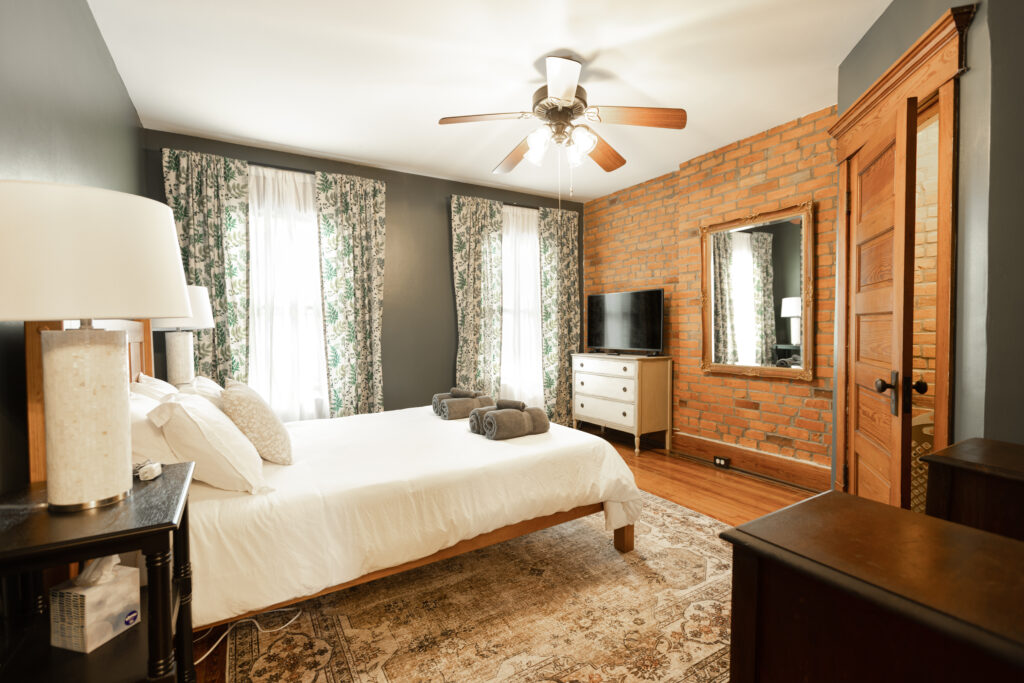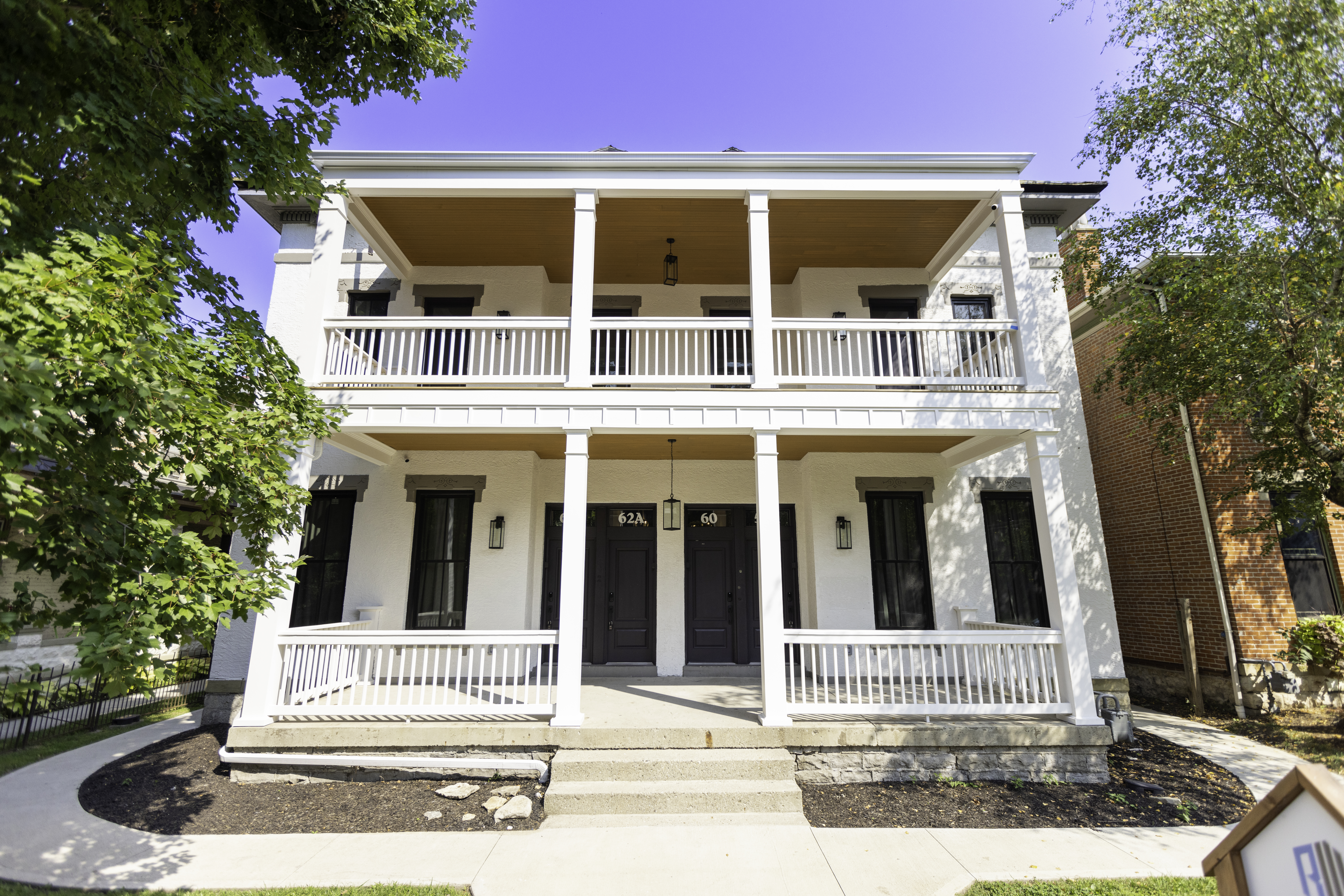
Why Do Airbnb Bookings Slow Down—and Should You Drop Your Prices?
You see the empty calendar. That pit forms in your stomach, and the first thought that screams into your head is, “I have to lower my rates.” We’ve all been there. It feels like the only lever you can pull when bookings slow down, but this is the biggest mistake you can make for your rental business and it’s a critical part of your short-term rental pricing strategy.
Slashing your prices out of fear is not a strategy. It’s a reaction. It devalues your property, attracts guests you probably don’t want, and actually costs you money in the long run. There’s a much better way to handle slow seasons, and it involves thinking like a business owner, not a panicked host. Let’s talk about a real vacation rental pricing strategy that builds a stronger, more profitable business for short-term rentals.
We’ve rounded up all of our Airbnb Hosting Must-Haves right here in our Amazon Store. Click here to grab everything you need to curate your property and start earning 5-star reviews.
Table Of Contents:
- The Panic-Pricing Trap Most Hosts Fall Into
- Know This Before You Touch Your Prices
- A Better Short-Term Rental Pricing Strategy That Actually Works
- Leveraging Technology for Smarter Pricing
- The Pro-Level Move: Taking Control of Your Bookings
- Conclusion
The Panic-Pricing Trap Most Hosts Fall Into
So why is dropping your rate your first instinct? Because it feels like an easy fix. The logic seems simple enough: if my place is the cheapest, someone will have to book it, right?
But think about this from a guest’s perspective. I was recently looking for a place to stay in Nashville for a work trip. I found two nearly identical vacation rentals in the same neighborhood. One was a couple of hundred dollars cheaper for the same dates.
Did I book it? Nope. My mind immediately filled with questions. Do they pay their cleaners a fair wage? Is the place actually clean, or do they cut corners with cheap products? That cheaper price wasn’t a selling point. It was a red flag that made me question the quality of the stay.
I booked the slightly more expensive place. Why? Because I wanted to know the host had the resources to give a great, clean, and well-stocked stay. A Skift research report shows travelers’ decisions are complex and not always driven solely by the lowest rental rates.
Unless your property is specifically designed to be the most budget-friendly option around, cutting your price pits you against a type of guest you might not be equipped to serve. You attract bargain hunters, not people who will appreciate the value you offer. Suddenly you are losing money on a guest who would have happily paid your fair daily rate anyway because your property was the perfect fit for them.

Know This Before You Touch Your Prices
Before you even think about adjusting your nightly rate, you have to get a handle on two fundamental concepts. Most hosts who jump to price cuts miss these completely. Getting these right is the foundation of a solid plan for your short term rental.
What is Your Booking Window?
Your booking window is the average amount of time between when a guest books your property and when they actually arrive. This is a simple but powerful piece of pricing data. Yet so many property managers don’t even know what theirs is.
Let’s say your average booking window for October is 45 days based on historical booking data. Why would you panic and drop your rates 60 days out? You’re still very much in the prime time for people to book your place. You haven’t given your normal booking cycle a chance to even work.
Cutting prices before your booking window even closes is just throwing money away. You need to let the process play out. This metric can change with the seasons and market conditions, so it’s important to stay on top of it. Reviewing this information helps you fine-tune pricing and avoid unnecessary discounts.
You Can’t Create Demand, You Can Only Capture It
Here’s another hard truth. Lowering your rate does not magically create a new wave of people who want to visit your town. Market demand is driven by local special events, holidays, weather, and a dozen other things far outside your control. Smart pricing is about responding to this existing demand, not trying to invent it.
If demand is low, it’s low for everyone in your vacation rental market. Your local competitors know this too. The goal is not to invent demand that doesn’t exist but to make your listing the most attractive choice for the travelers who are looking.
The best listings still get booked first, even during demand periods with low occupancy rates. They compete on value, not just on having the lowest price. You are competing for a smaller pool of guests, so you need to be at your absolute best.
A Better Short-Term Rental Pricing Strategy That Actually Works
We’ve had hosts tell us, “I’ve tried everything.” But when we dig into it, “everything” just means they’ve lowered their price as low as it can go. That’s not trying everything. That’s hitting the panic button and hurting your ability to boost revenue.
Fighting for your business means rolling up your sleeves and doing the real work. It means focusing on the things you can control to make your property irresistible. Let’s break down the steps that will actually drive bookings.
Step 1: Conduct a Full Listing Audit
When was the last time you truly looked at your own listing with fresh eyes? An audit means going through every single section of your profile on the booking platforms. Look at your photos. Are they professional and do they tell a story about the guest experience?
Read your listing description and title. Do they speak to a specific kind of guest? Are you highlighting what makes your property a great choice? A compelling narrative is far more powerful than a simple list of amenities, and it’s a key part of your Airbnb pricing strategy.
Step 2: Shop Your Competition (The Right Way)
Looking at your competition, or your “comp set,” is about more than just checking their prices. You need to perform a thorough market analysis. New properties pop up all the time in the rental market, and old ones change.
Read their reviews. What do guests love about their stay? What do they complain about? This is free market research you can use to improve your own offering and adjust your base rate accordingly.
Analyze their photos and how they position their property. See what kind of amenities they offer and how they describe the experience. Your goal is to understand how you can stand out in a meaningful way, not just be cheaper. AirDNA offers great advice on how to properly identify and analyze your competitive set.
Step 3: Rethink Your Amenities
Take an honest look at your amenities. Are they just checking boxes, or are they genuinely improving the guest experience? Sometimes small, thoughtful additions can make a huge difference and justify a higher daily rate.
This doesn’t mean you have to install a hot tub tomorrow, which would significantly increase operational costs. It could be as simple as adding a high-quality coffee station, providing a dedicated workspace for remote workers, or stocking family-friendly items like a high chair and games. The right amenities show you understand your ideal guest’s needs.
Step 4: Sharpen Your Messaging and Positioning
Who are you trying to attract? If you can’t answer that question clearly, your listing is likely falling flat. Your messaging needs to align perfectly with the kind of guest you want to host.
If you’re an upscale property, your language should reflect quality, comfort, and experience. If you cater to families, it should be about fun, convenience, and creating memories. When your positioning is clear, you attract guests who are a great fit and willing to pay for what you offer, which is crucial for protecting brand identity.
Step 5: Master Your Calendar Management
This is a big one that many property managers overlook. Your calendar settings and restrictions could be making your property invisible. You might be missing out on countless bookings without even realizing it.
Do you have a strict minimum night stay that is out of step with how people are actually traveling to your area, especially during shoulder seasons? Are your check-in and check-out rules too rigid? You might have set these restrictions a long time ago and forgotten about them, hurting your occupancy rate.
Go back into your calendar settings and look at everything. Flexibility can be a huge competitive advantage. According to a guide from Hostaway, finding the sweet spot for your minimum night stay can dramatically increase your visibility and bookings.
If you’re digging into pricing strategy, don’t forget that your minimum night stay settings play a massive role in your overall revenue. Too strict, and you’ll scare away potential guests; too loose, and you could miss out on higher-value bookings. We break this down step-by-step in our post on Optimizing Minimum Night Stays—a must-read if you want your pricing strategy to actually stick.
Leveraging Technology for Smarter Pricing
Many successful pricing strategies now rely on technology to do the heavy lifting. Instead of manually trying to keep up with market trends, automated pricing tools can adjust your rates in real-time. This approach, often called dynamic pricing, is a game-changer for revenue management.
A dynamic pricing tool uses algorithms and machine learning to analyze vast amounts of data. It considers factors like local events, competitor pricing, seasonality, day of the week, and historical booking patterns. Based on this analysis, the tool can automatically adjust rates to capture the highest rate possible for any given night.
The successful implementation of these tools can help hosts and revenue managers maximize revenue without the constant guesswork. While some platforms offer their own version, specialized dynamic pricing tools often provide more control and sophisticated analysis. They allow you to set a base rate and then establish pricing rules to guide the automation, ensuring you never dip below your profitability threshold.
| Pricing Approach | Description | Key Benefit |
|---|---|---|
| Manual Pricing | The host manually sets all daily rates based on their own research and intuition. | Full control over every single rate, but extremely time-consuming and prone to error. |
| Seasonal Pricing | Establish seasonal rates for different times of year (peak, off, shoulder). | Better than a flat rate, but still misses daily fluctuations in market demand. |
| Dynamic Pricing | Uses automated pricing tools and algorithms to adjust rates based on real-time data. | Maximizes potential revenue by responding instantly to market conditions. |
For a real estate investor or a property manager with multiple listings, a rental pricing tool is essential. It provides key performance indicators and insights that would be impossible to gather manually. This data-driven approach helps you fine-tune pricing with precision, leading to higher occupancy and better returns.
Pricing is only part of the equation—your property setup is just as critical. The right essentials not only justify higher rates but also keep guests coming back. Grab our free Airbnb Essentials Checklist to make sure your space has everything today’s travelers expect (and what helps you earn glowing 5-star reviews).
The Pro-Level Move: Taking Control of Your Bookings
Everything we’ve discussed revolves around optimizing your business within platforms like Airbnb or Vrbo. You’re playing in their sandbox, by their rules. But what if you could build your own system for your vacation rental business?
Building Your Own Ecosystem
The ultimate strategy is to reduce your reliance on third-party platforms. This means building your own direct booking business. It’s about creating an ecosystem that you own and control.
Start an email list of past guests. These are people who already know, like, and trust you. They loved their stay and are your most likely source for repeat bookings and referrals.
Imagine a slow period is coming up. Instead of helplessly lowering your rate on Airbnb, what if you could send a powerful email to your past guests with a special offer for a staycation? You now have some control to generate your own demand. This is what it means to be a true business owner in the vacation rental industry.
Your Business-Driven Response to a Market-Driven Problem
You can’t control the market. But you can control your response to it. Your response should be driven by smart business decisions, not by fear.
This is the real work. It’s building a direct booking website, growing your email list, and creating a brand that people want to book again and again. Platforms like Lodgify can help you build a professional site to take direct bookings. This also simplifies channel management, as you can sync calendars through a channel manager.
This proactive work is what separates successful hosts from those who are constantly reacting to the market. It allows you to build a more stable and profitable business for the long term. You’ll feel encouraged and excited about the future of your property management.

Key Takeaways
Clarity comes from booking data and from being deeply involved in your business. Panic pricing will never get you closer to your revenue goals. Instead of instinctively dropping your rate the next time bookings are slow, choose to work on your business. A proactive short-term rental pricing strategy will always pay off more than a reactive one.
Keep Learning with Us
Your hosting journey doesn’t stop here! 🎉 Whether you’re looking for the tools we personally use to run our rentals or want to dive deeper into strategies that make hosting more profitable and enjoyable, we’ve got you covered. Head over to Thanks For Visiting to learn more and explore our favorite trusted tools, free resources, and next steps for growing your hosting business.
Happy Hosting!



show comments
HIDE comments